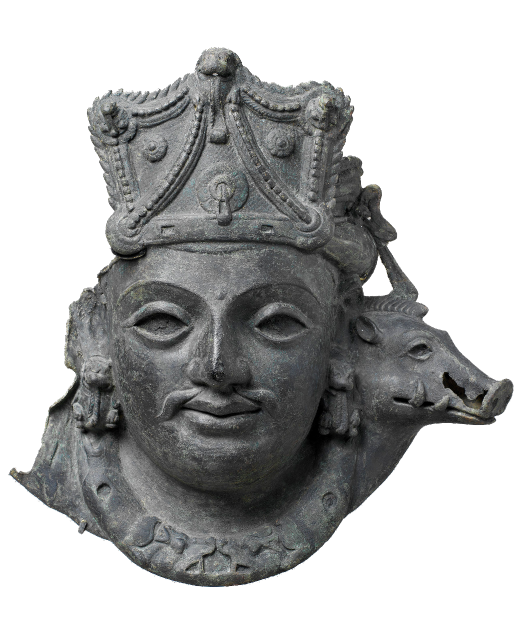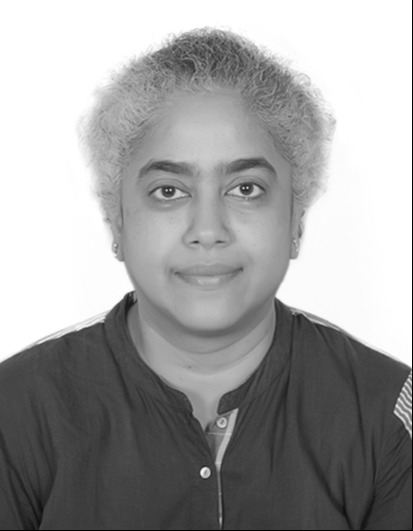PERSPECTIVES
The Art of Pichwai Conservation: ‘Delighting Krishna’ at the Smithsonian
Pichwai art, (from the Sanskrit terms for “back” and “hanging”), plays a significant role in the Pushtimarg temple practice. Within this Hindu tradition, pichwais are placed as backdrops in shrines to Krishna, one of the 10 primary avatars of Vishnu. Woven, printed, or painted in opaque watercolour, gold, and silver on handloomed cotton, they help create the multi-sensory temple experiences that make the divine swarup (form) of Krishna accessible to his devotees.
The Smithsonian National Museum of Asian Art’s (NMAA)’s show, Delighting Krishna: Paintings of the Child-God (March 15-August 24, 2025), adopted a collaborative approach — engaging with sevaks (devotees), scholars of religion and art history, conservators, and a conservation scientist — to develop the show’s central concept of “delight.” The emotion incorporates both the means for engaging with an immanent deity, as well as the delight that Krishna (and aesthetic practices like pichwai) engenders.
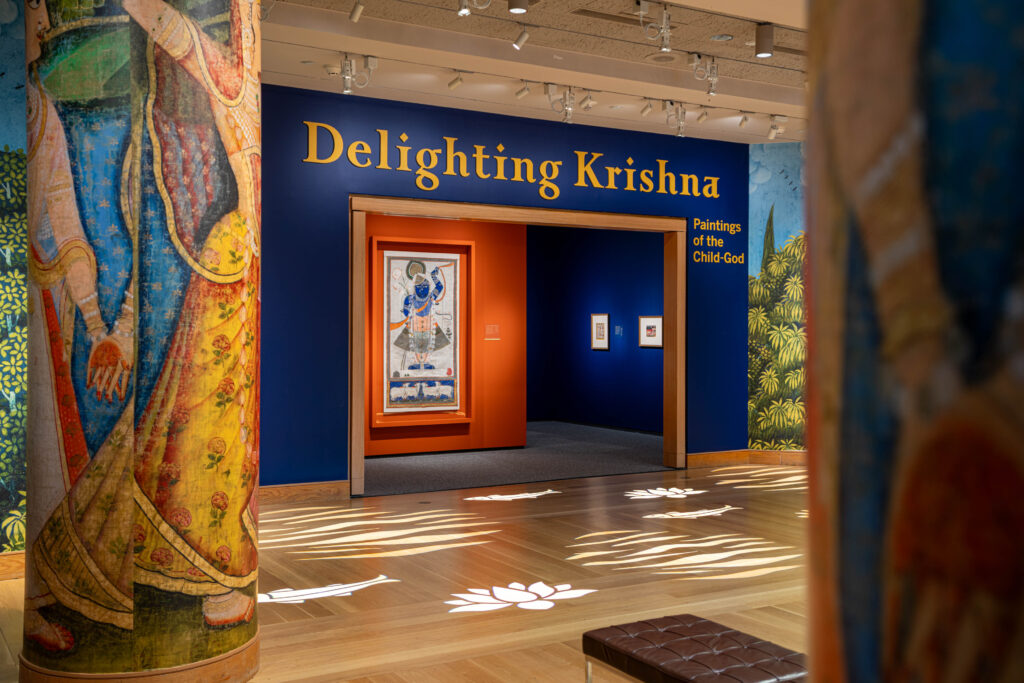
Speaking about the curatorial approach, Dr Debra Diamond, who is NMAA’s Elizabeth Moynihan Curator for South and Southeast Asian Art, said the show maximises the museum’s potential as a forum for dialogue.
“Within Delighting Krishna, visitors encounter the artworks from multiple perspectives. In the gallery, a single pichwai might be surrounded by four wall labels, offering different entry points to the visitor viewing the exhibit. They reflect how Pushtimarg community members, scientists, curators, and conservators engaged with the artworks,” she said. “Museum specialists and communities can and do learn from each other in creating such exhibitions, and I think Delighting Krishna’s creative and joyful and multi-directional exchanges come across to all visitors to the exhibition,” she added.
The exhibition also explores how artists balanced iconographic continuity with constant innovations, from deploying less-corrosive, newly-imported pigments from Europe to adopting new styles, media, and technologies of reproduction. “These allow us to represent how artists working in different media and formats conveyed Pushtimarg concepts and emotions,” said Diamond about the show that also features manoraths, and Pahari and Rajasthani court paintings, ranging from the ca. 1525 Palam Bhagavata Purana to the eighteenth-century.
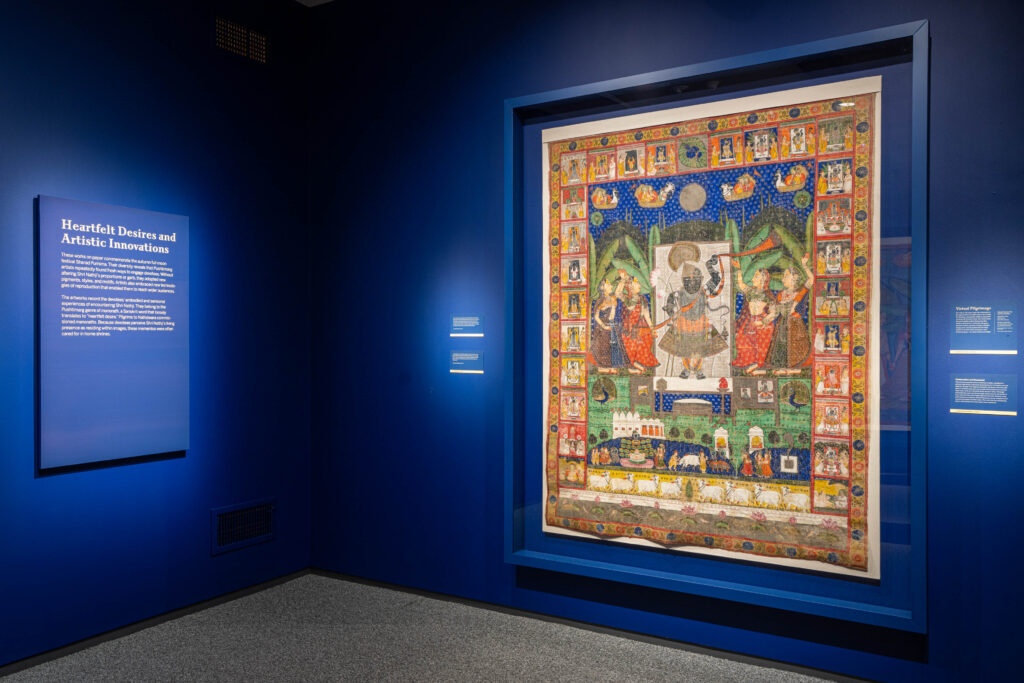
But the 14 newly-conserved pichwais from the museum’s collection, on display for the first time since the 1970s following a three-year-long conservation process, has attracted the most attention. They were painted in Rajasthan and the Deccan between the eighteenth and twentieth centuries and were donated in 1992 to NMAA by Karl Mann, an American artist and interior designer, who had purchased them by the pound in Nathdwara in the 1970s.
Jennifer Giaccai, NMAA’s Conservation Scientist; Nancy R Pollak, Conservator of Paintings and Painted Textiles from Art Care Associates; and Jenifer Bosworth, NMAA’s Exhibitions Conservator, weighed in on the painstaking conservation process and what it took to revive the fragile pichwais for the exhibition.
Bindu Gopal Rao: Can you explain what went into the extensive restoration process?
Jennifer Giaccai: The project began with a survey of all the pichwai in the collection to evaluate any conservation needs. After the pichwai for the exhibition were chosen, more time was spent with each selected work to get it ready for display and to analyse how the pigments used to paint the pichwai changed over the 150-year span of time. The overall goal of conservation was to structurally stabilise the pichwai so they could hang freely, (just) like when in use during ritual practices.
Nancy R Pollak: In past treatment, most of the larger pichwai had been stitched to heavy-weight fabric backings, which hid original edges and caused stress and distortions in the thinner original fabric. Other smaller pichwai had been glued to fabric backings and stretched over strainers, making them look more like Western easel paintings. First, we released the pichwai from these damaging backings so they could hang freely. Once released from the backings, we documented and removed problematic patches on the back of the original fabric. These patches were thicker and much larger than the areas of damage in the original fabric, causing harm to the thinner, more delicate pichwai fabric at the edges of the patches. Removal of the patches allowed the pichwai fabric to flex without stress.
Jenifer Bosworth: Additionally, the original top hanging edge had been cut off in many of the pichwais. So, we adhered a header of thin, compatible fabric to the top edge to provide a means to secure the pichwai on its mount. While the bulk of the conservation treatment focused on structural stabilisation, some limited cosmetic treatment was also undertaken. Where there were holes in the pichwai fabric, the new patches visible through the holes were inpainted so that the losses did not disrupt the image.
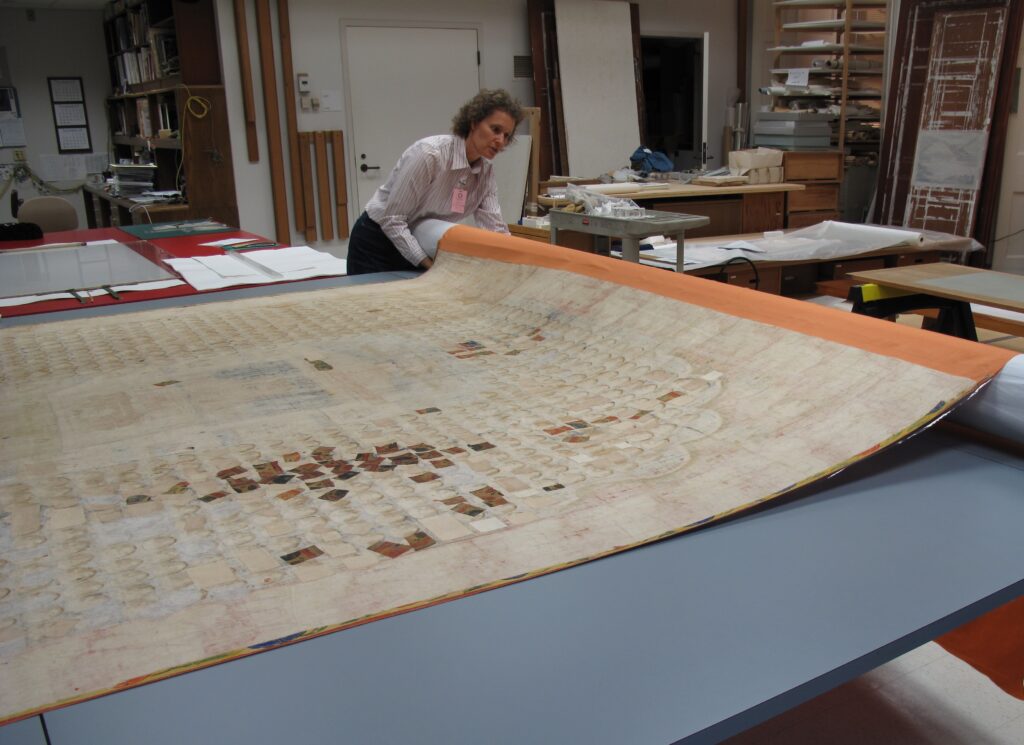
Rao: What were some of the conservation techniques used?
Giaccai: To consolidate areas of flaking paint, we applied a stable adhesive that would remain flexible and would not alter the appearance of the paint layer under lifting paint flakes with a small brush. After the adhesive had wicked into the paint and fabric, the flakes were lightly rubbed or weighted, using a silicone release paper, to ensure that the paint flakes were re-adhered to the fabric.
Pollak: For holes and to support weak areas of original fabric, we prepared thin Japanese paper, in colours like the back of the pichwai, with adhesive that was torn to create a soft edge closely following the area of damage. We then heat-set the patch with gentle heat and pressure to the back of the pichwai. Paper patches were chosen rather than fabric ones because the paper more closely resembled the original pichwai fabric once it had been prepared with its ground layers.
Bosworth: For inpainting, we used resin-based paints specifically formulated to remain stable and reversible over time and to be distinguished from the original paints. The goal of inpainting was to allow areas of damage to recede from the eye without distracting from the rest of the painting. It was not to faithfully recreate lost areas, particularly since, in some areas, what was originally intended could not be determined. For scientific analysis, our primary focus was on noninvasive methods. We used multispectral imaging with the assistance of the Smithsonian’s Museum Conservation Institute and a handful of scientific instruments (x-ray fluorescence, Raman spectroscopy, FTIR spectroscopy, and visible-infrared reflectance spectroscopy) to identify the pigments used for the different colours in the pichwai. Through this analysis, we discovered several interesting facts about the artists. For example, they appear to have frequently incorporated new pigments into the pichwai, like what is observed in paintings and artists in surrounding regions.
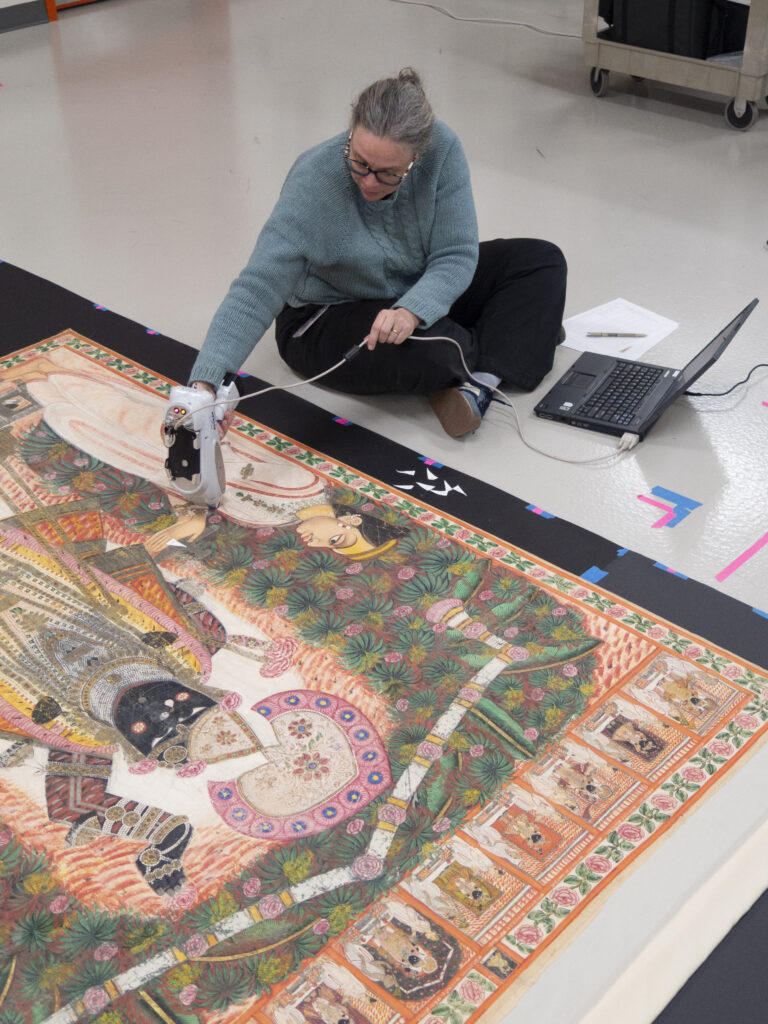
Rao: What were some of the challenges the team faced during the conservation process?
Giaccai: The biggest challenge was handling such large, yet delicate objects. The largest objects on view are around 8 x 10 feet! Planning ahead was crucial to make sure that there were enough people and enough space to handle the pichwai safely. Their large size makes it difficult to reach into the centre of the pichwai, so, since pichwai are rolled for storage, we sometimes rolled the pichwai from both ends to reach the area of concern.
Pollak: We also had to remember to balance the section being worked on with the object overall. For some of the largest pichwai, we were only able to take a far enough step back to really see the overall piece when it was hanging in the exhibition. Good photographs and communication helped in not losing sight of the overall picture.
Bosworth: The large number of patches on the back of some of the pichwai, their jumbled nature, and the fragile condition of the original fabric were challenging. Trying to accurately document patches and stabilise the pichwai fabric took lots of time and focus. Using multiple forms of documentation, including photos, written descriptions of patches, spreadsheets, and clearly identifying the saved patches after removal, helped. Seeing the original pichwai fabric become more stable and flexible after treatment was the reward.
Bindu Gopal Rao is Bengaluru-based freelance writer and photographer who writes on art, design, travel and lifestyle trends. She is passionate about the environment and enjoys birding.
